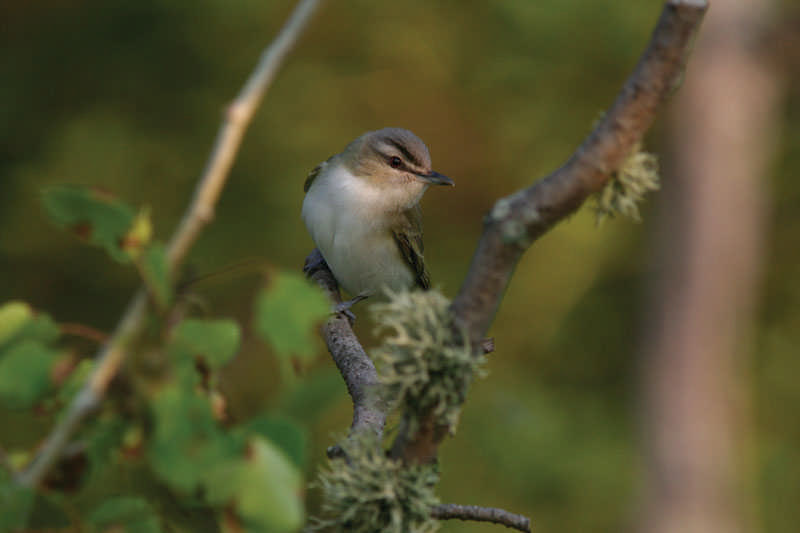Other vireos are not as common, but each species seeks out a particular habitat. Yellow-throated vireos occupy mature woodlands near rivers and streams. Warbling vireos prefer patchy woodlands, and Bell’s vireos prefer shrubby wetland habitats. Where pine and spruce abound, the blue-headed vireo squeaks out a song that sounds suspiciously like, “Ah-choo!” Among the moist thickets and overgrown fields, the white-eyed vireo adds an upbeat and energetic tempo to the concept of vireo song.
It seems every habitat has a vireo. Though they may be teasing you from above, chiming in that little song, “I see you … I see you … I see you,” the joke may be on them. After all, you are the one with the binoculars.
Brian M. Collins helped to study vireos in Puerto Rico a number of years ago, but his neck is still strong from the searching!












